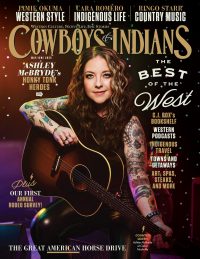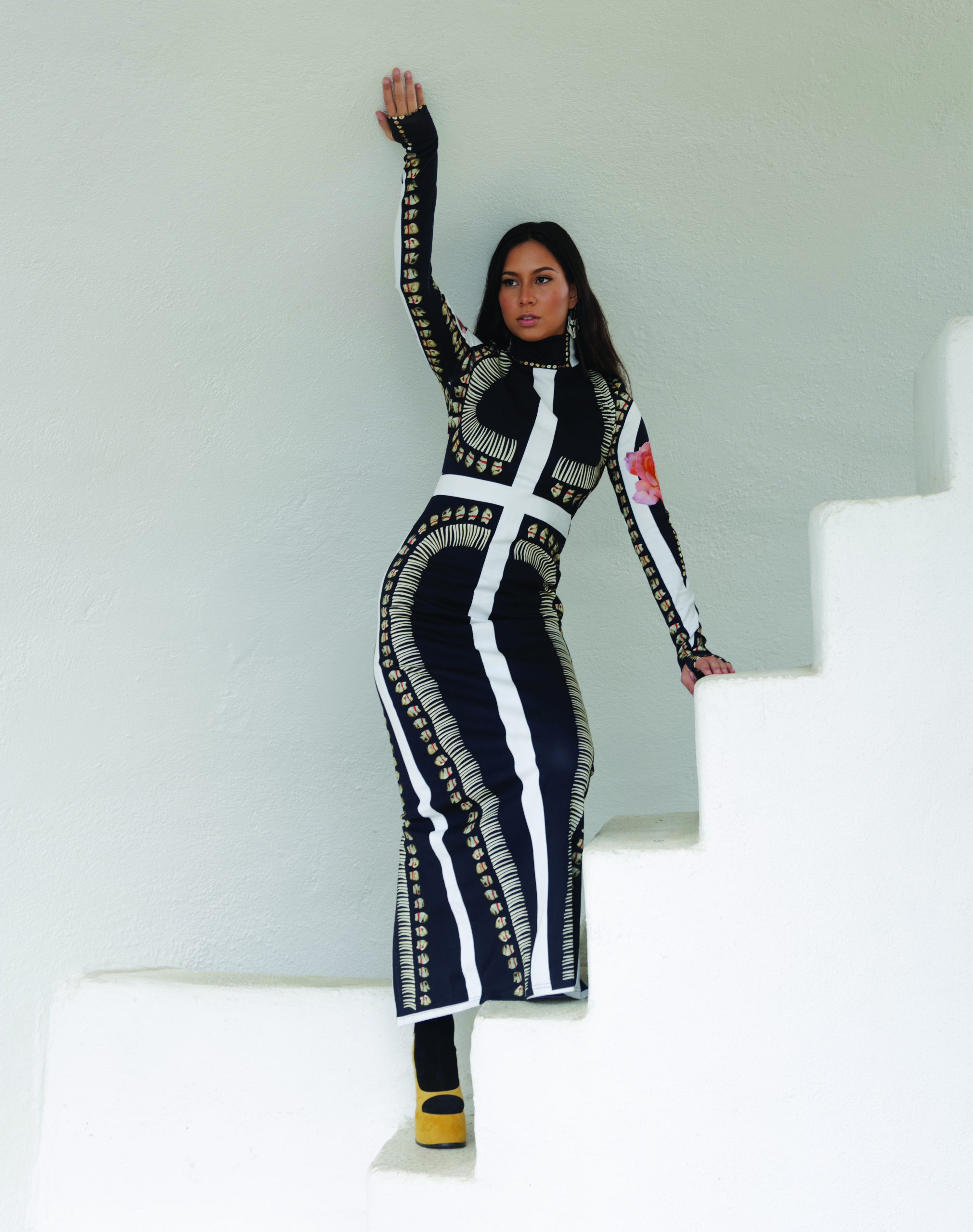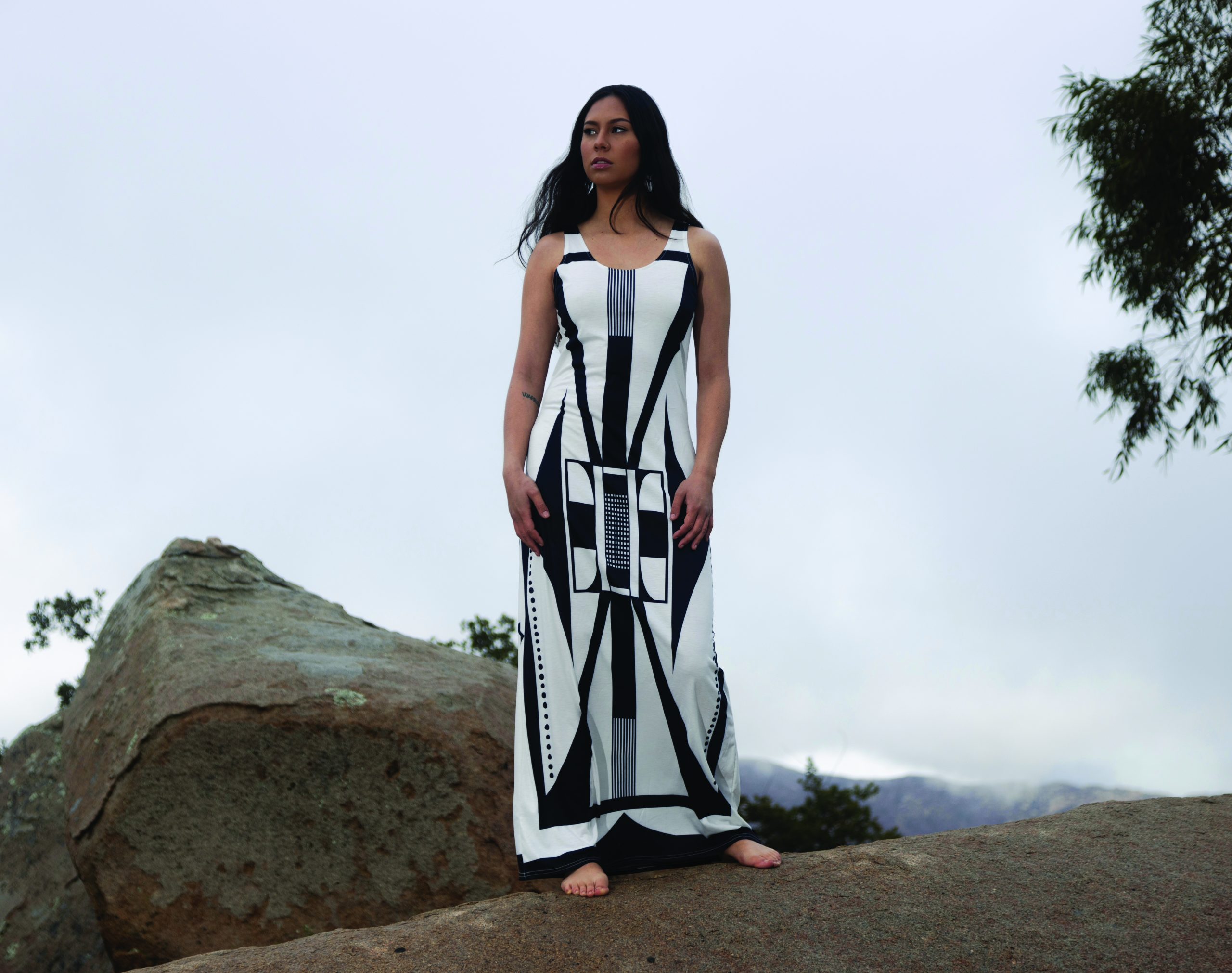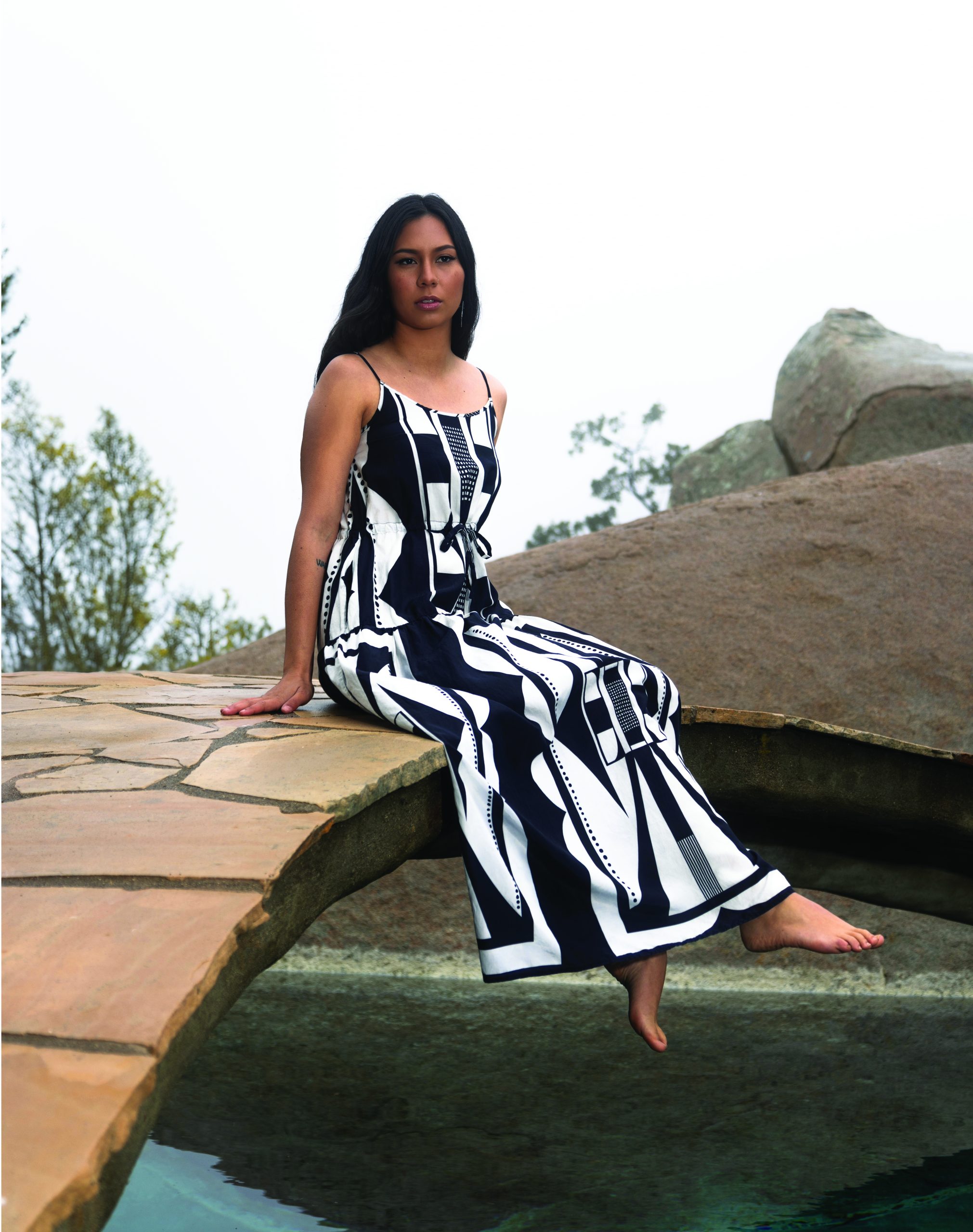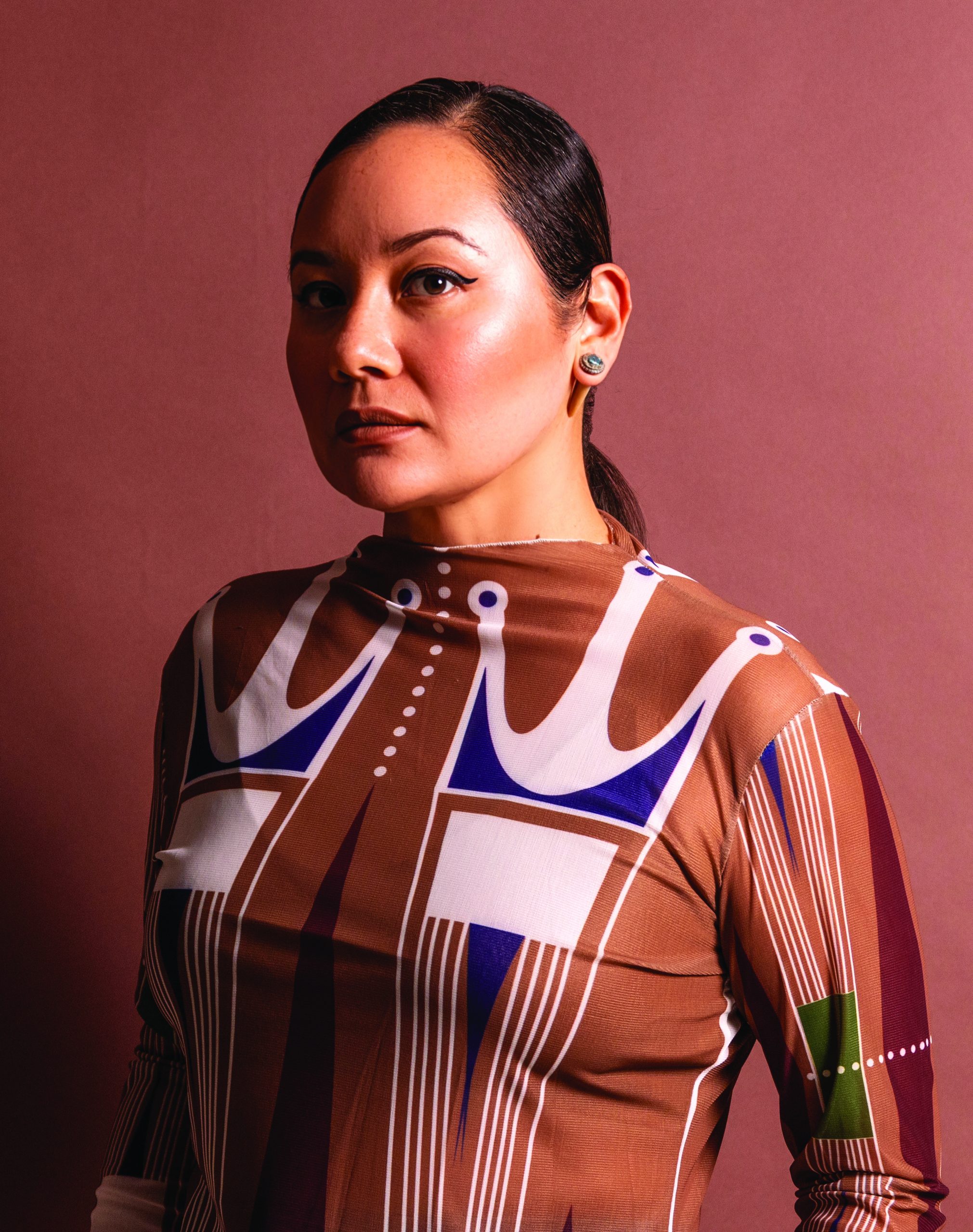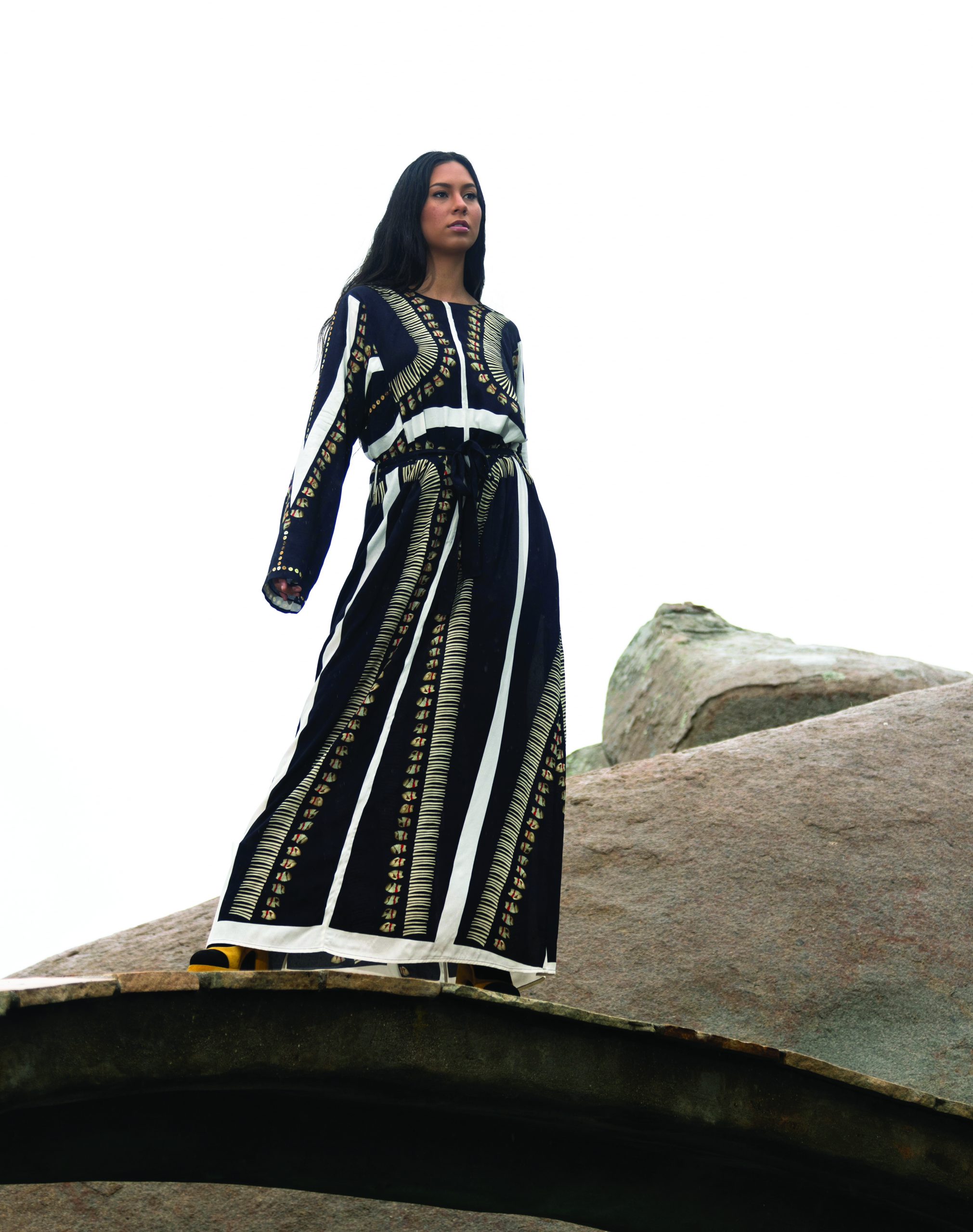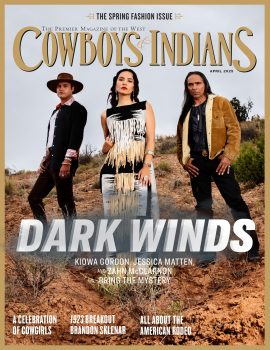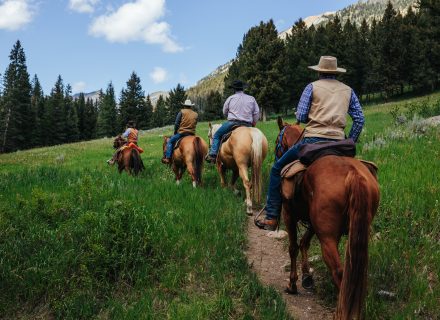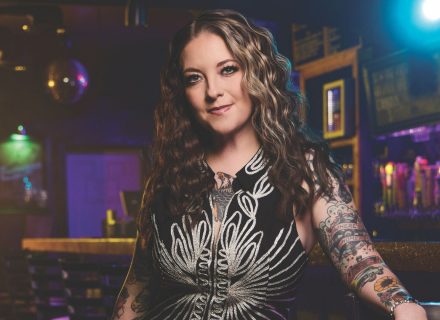Jamie Okuma and C&I collaborated on a special photo shoot in California. The Indigenous fashion designer invites us into her beautiful world.
Jamie Okuma is undeniably one of the most impactful, influential visionaries in Native American fashion. The proof is in the high praise that just keeps coming: The Luiseño/Shoshone-Bannock/ Wailaki/Okinawan designer was the first Indigenous talent ever inducted into the esteemed Council of Fashion Designers of America back in 2023. Her legendary beadwork is featured in the permanent collections of venerable cultural institutions like the Metropolitan Museum of Art in New York and the Smithsonian National Museum of the American Indian in Washington, D.C. And her looks continue to stun on red carpets and runways alike, from the Met Gala to SWAIA Indian Market.
By all accounts, Okuma has made it. Yet despite all the well-earned acclaim, she still understands the uncertainty and unpredictability of the fashion world.
“Even to this day, every launch is terrifying,” says Okuma, who is a member of the La Jolla band in Southern California, where she lives with her husband and two boys. “Even if I think a new collection is cool, that doesn’t necessarily mean it’s going to do well. My mom and I take bets on which piece will be the best seller, and I’m always wrong. Over the years, I’ve just ridden my own wave, and with maturity has come the understanding that everything will be OK even if a collection doesn’t do great. My entire career has been a gamble, and I’ve come to terms with the risks I’m taking.”
Okuma bet on herself early, pursuing design despite early naysayers who said her ambitions were too big. She skipped out on fashion school and instead put that potential tuition money toward her first clothing collection. She hasn’t looked back since — though that’s not to say it’s been an easy journey.
“My entire career has just been one step in front of the other, learning from my mistakes,” she says. “And I’ve had some major, major mistakes, but they were all mine. I’ve never been beholden to anybody; I never took out loans or took on partners. I knew I couldn’t freely think and design if I was worrying about how to pay someone else back. It’s really just been trusting my gut and taking those gambles. But when I win, I win big.”
Dream Into Reality
The insatiable drive that has propelled her both personally and professionally started at an early age — we’re talking 8 years old. “I was making friendship bracelets when I was in 3rd grade, and people started asking for them,” recalls Okuma, whose career spans three decades. “I needed to pay for my materials, so I started charging a dollar for them. It’s just always been in me to make and sell my designs, even back then.”
Art was a constant throughout Okuma’s childhood thanks to her mom, Sandra — herself a renowned painter and bead worker — who regularly took her to Los Angeles’ historic Southwest Museum of the American Indian. Seeing the exquisite designs created by her forebearers on display there made a lasting impression on Okuma.
“I’ve been seeing our people’s work pretty much since I was a baby,” she says. “They were able to create work that would be considered on par with haute couture even under terrible living conditions, so that’s how I’ve always viewed my work. It doesn’t matter how long it takes or how much hard work has to go into it; it’s going to be done to perfection.”
It’s no wonder that her work — from the regalia she crafted as a child to the soft sculpture beadwork dolls she began crafting as a teen to the high-fashion and ready-to-wear pieces she designs today — has always been easily identifiable as Okuma thanks to some distinguishing hallmarks, including exemplary workmanship and incredible attention to detail.
To this day, she maintains a hands-on approach (quite literally) when it comes to her eponymous brand as well the eco-conscious Earth We Wear label she launched last fall. “This probably comes from being an artist, but I cannot say something is mine unless I design every element of it,” she says. “I’ve been working on designing my aesthetic for decades, and I think that’s why people know it’s mine, even if they don’t see my name. To me, that recognition of my aesthetic feels like success.”
It tracks that she wishes there were more hours in the day to get everything done, but she’s grateful for what modern innovations allow her to accomplish in comparison to her ancestors. “Technology has changed everything for my fellow designers and me,” she says, nodding to graphic design tools, social media, e-commerce, and the like. “It’s absolutely amazing how much easier it is to create and to put our work out into the world than it was for our predecessors. I also think this level of visibility pushes everybody to do even better.”
If you’re damn good at what you do, nothing’s going to stop you. — Jamie Okuma
Meeting The Moment
Much like she holds herself to a high standard, Okuma believes Native fashion as a whole needs to be executed at an impeccable level — not only to reflect Indigenous traditions dating back centuries but also to be taken seriously by the mainstream fashion industry and non-Native consumers. For her, it’s important to know that she has earned her place.
“When I was asked to join the CFDA, I was excited but I was also skeptical,” she remembers. “I wondered: Are they doing this because I’m Native or because I’m on the same playing field as the rest of the membership? I was relieved when they reassured me it was very genuine and that they had been watching me for years. But it’s not the fashion industry’s job to uplift us; that’s our job. It’s about creating that for ourselves. If you’re damn good at what you do, nothing’s going to stop you.”
Okuma is happy to share her knowledge with other Indigenous designers who hold her same sense of determination, such as Apsáalooke bead worker Elias Not Afraid. After all, she says, that’s tradition. “Seeing that drive that I had as a young person in someone else is so thrilling,” Okuma says. “If I’m going to invest my time with someone, I want to know they’re serious. There are things I wish I’d known along the way, so if I can help someone avoid those speed bumps, I’m happy to. It’s just our culture to help each other; we’re not in competition with each other.”
In setting an example for her kids (who have big ambitions of their own), her fellow designers, and the Native community at large, Okuma offers some hard-earned words of wisdom. “I’m proof that you can do things outside the box and that you don’t have to follow the rules — it is possible,” she concludes. “You can do what you absolutely love on your own damn terms, and if you work hard enough, you can carve your own way and still be connected to your people. You can live in these two worlds very harmoniously. I didn’t decide to be an artist; it’s what I was born to do. It’s who I am and who I always will be.”
Find out more at jokuma.com and earthwewear.com.
From our May/June 2025 issue.
PHOTOGRAPHY: Cameron Linton



